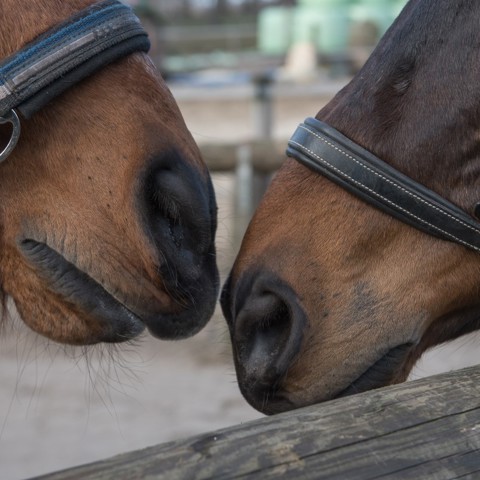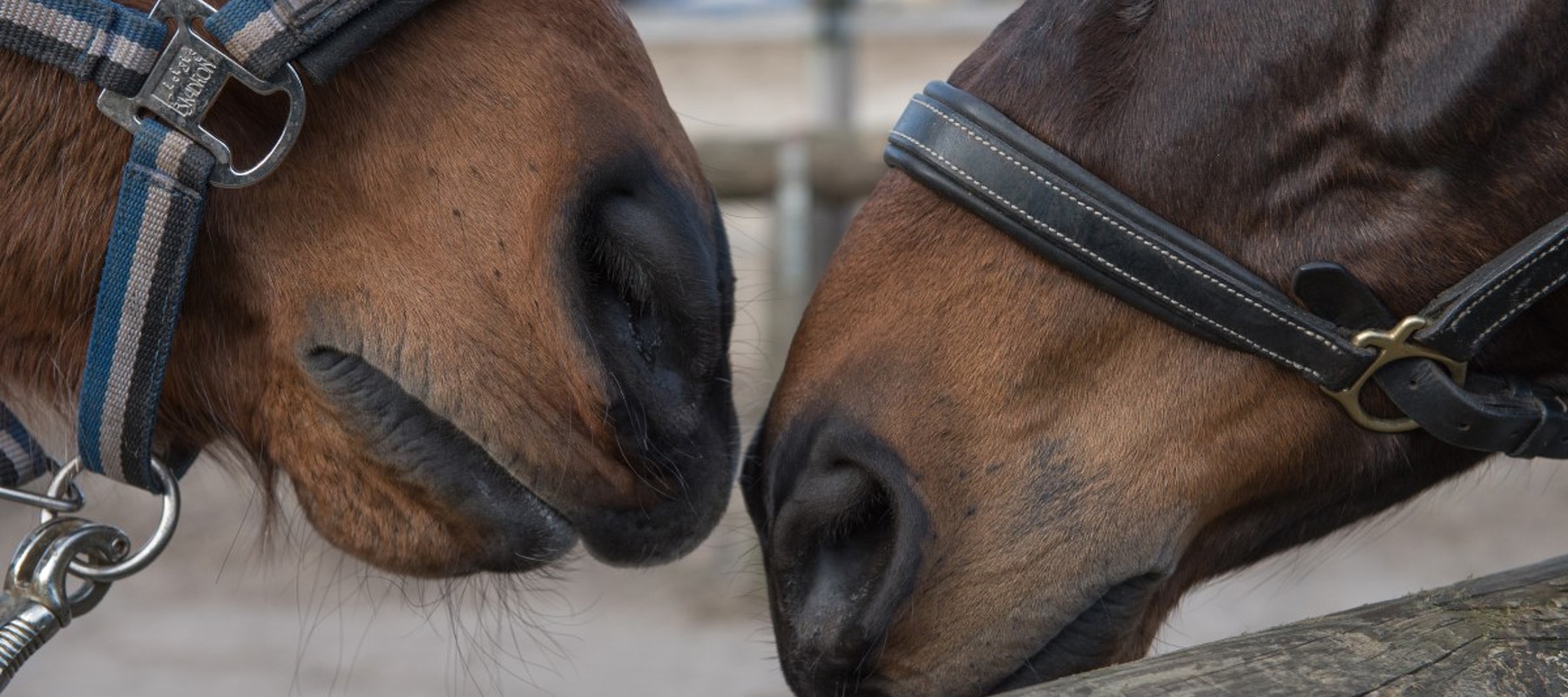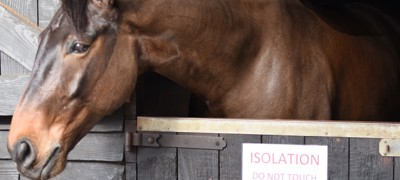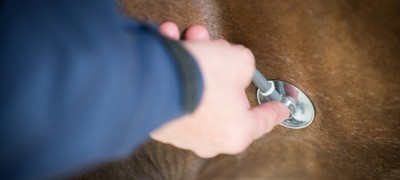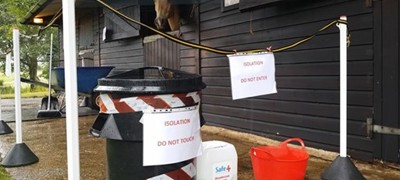Signs
Signs of equine flu include:
- An increased temperature above 38.5oC (101.3oF) for one to five days. This can happen before any visible signs are shown by the horse. Watch our video below on how to take your horse’s temperature, to establish what their normal healthy temperature is.
- A frequent dry, harsh cough
- A clear, watery nasal discharge that may become thick and yellow or green in colour, a few days later
- Loss of appetite
- The horse is lethargic
- Swollen and painful glands under and around the jaw
- ‘Gags’ when eating
The disease can weaken a horse, leaving them vulnerable to secondary infections including bronchitis, pneumonia, swelling of the lower limbs and sore muscles. Such complications are particularly worrying in young foals, elderly animals and those with a pre-existing respiratory disorder. In serious cases this can be fatal.
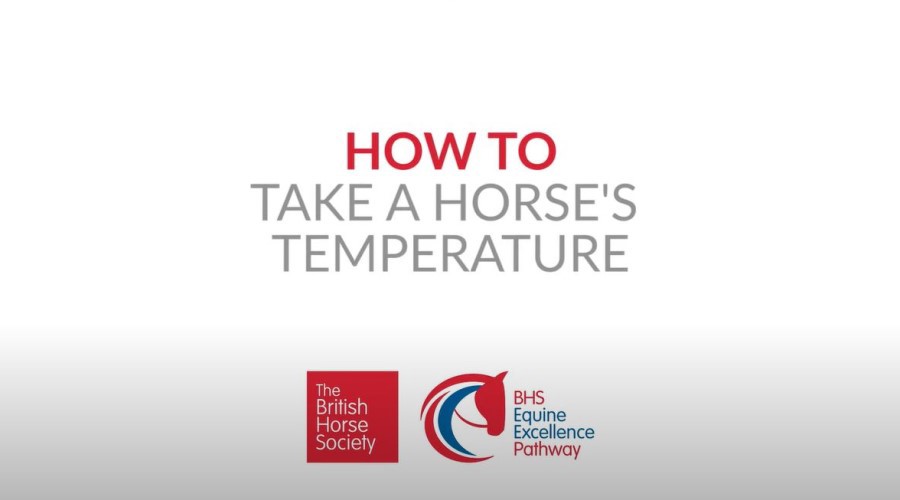 play-circle
play-circle
Watch
How to take a horses temperature
Treatment and Management
If flu is suspected, isolate your horse and contact your vet. It is likely that a swab will be taken and possibly a blood test.
Learn more about the steps to take in the event of a disease outbreak.
There is no direct treatment for flu, much like people with flu, the best treatment we can provide is supportive care and plenty of rest.
The dust levels in the horse’s environment should be kept as low as possible, so the respiratory system is not further affected.
It can take several weeks for the horse to recover and return to full health. If not appropriately managed, there is also the risk of complications such as relapse, permanent damage to the heart muscle, infections of the upper and lower respiratory tract and pneumonia1. Seek your vet’s advice before returning your horse to work to prevent these occurrences and ensure they aren’t over stressed or over worked.
Spread of Equine Influenza
Equine influenza is an airborne virus and when an infected horse coughs, droplets are released into the air. In certain situations, the wind can spread the virus up to 2km2. Equine flu can also be spread via direct contact from horse to horse or indirectly, for example by handlers, equipment, feed buckets, sharing horse transportation and in stables that have not been sufficiently cleaned and disinfected between horses3. The incubation period (time between becoming infected and the onset of signs) for the disease is between one and five days. Therefore, an influenza outbreak can quickly spread between horses, particularly among unvaccinated horses2.
Preventing Disease Spread
Maintaining good health and hygiene management practices on your yard, with the correct disease prevention measures in place, can also help to prevent the spread of equine flu and other diseases.
Learn more about the simple steps you can take to prevent the spread of disease.
Vaccination
Vaccination remains the most important way of decreasing the risk of flu.
When the vet arrives to vaccinate your horse, make sure their passport is available so the injection can be correctly recorded. If you are worried that your horse might not be well, if, for example, they are lethargic or not eating as usual, speak to your vet ahead of vaccination. It may be that your horse is incubating a disease and therefore vaccinating at this point could cause a negative reaction.
Flu is an adaptive virus and can change over time. As a result, although vaccines are available, it can be difficult to keep them fully up to date with the most current strain. This means the vaccines may fail to provide full immunity. This has led to cases where vaccinated horses can suffer with flu. However, vaccinated horses will not be as severely affected and will suffer for less time compared to unvaccinated horses5. They will also shed less of the virus, reducing the risk of spread to others2. Your vet will be able to advise on the most current vaccine available.
Initial Course – First Year
chevron-down
chevron-up
The vaccination programme begins with a series of injections given over the first year, which is then continued by boosters to maintain cover against the virus. It is important not to allow the booster to lapse, because even being one day late will result in the initial vaccination programme having to be restarted, which will be costly for the owner.
Boosters
chevron-down
chevron-up
Vaccines help to protect the horse by providing a strong antibody response. Unfortunately, this is short-lived, which is why horses need to receive regular booster vaccinations. As a minimum, all horses should be vaccinated annually (no more than a year apart). Six monthly booster vaccinations are an option and will help to maintain the horse’s antibody levels, leading to greater protection against equine flu4,5. If you are competing with your horse, make sure you check the specific rules relevant to the organisation, as some request that horses have a six-monthly booster.
Vaccination Intervals
chevron-down
chevron-up
IMPORTANT – vaccination rules differ between organisations. It’s the responsibility of the owner to check the relevant governing body rules and ensure their horse’s vaccinations are compliant. Be aware some rules stipulate that horses cannot be competed within a certain amount of time after being vaccinated.
From 1st January 2024 many equestrian organisations changed their Equine Influenza vaccination rules following advice from British Equestrian (BEF). The date ranges of the second and third vaccines for a horse starting a new primary course or had to restart their influenza vaccinations have been reduced.
If your horse started their new primary course or had to restart their influenza vaccinations before 1st January 2024 you may follow either the old or new intervals.
Horses whose vaccinations are current and correct will not be affected by this new change. Continue to ensure your horse’s booster is kept up to date.
If you have any concerns, speak to your vet who can offer further guidance.
British Riding Club’s Equine Influenza vaccination rules are detailed in their 2025 Handbook.
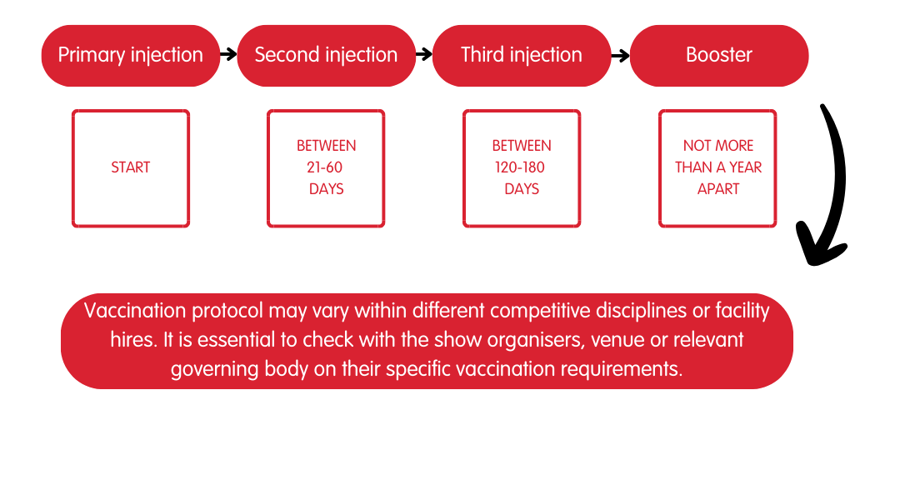
Herd Immunity
Where a higher percentage of the equine population is vaccinated, the spread of the disease is ultimately reduced. For herd immunity to work, a large proportion of the population must be vaccinated. It’s estimated that only 40% of the UK equine population is vaccinated against influenza6. By following the advised vaccination procedure, you are not only protecting your own horse, but also increasing the UK’s herd immunity.
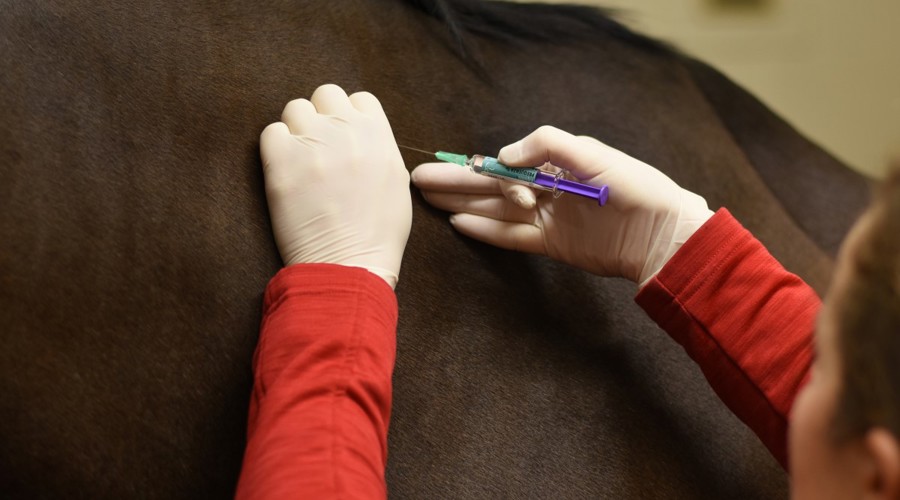
Shows and Events
Carrying your horse’s passport is a legal requirement when transporting and shows or events may conduct vaccination checks. It’s essential to check with the show organisers or relevant governing body on their specific vaccination requirements. If your horse doesn’t meet their requirements, it’s likely that you will not be allowed to compete. If you hire equestrian facilities, it’s important to check the vaccination rules of the venue.
When attending shows or events, it’s important that good biosecurity practices are maintained at all times to prevent the spread of disease.
Learn more about preventing the spread of disease at events.
Useful Resources
References
chevron-down
chevron-up
- British Equestrian: Equine Infectious Disease Advisory Group. (2022) Advice notes for member bodies and organisations of equine gatherings.
- HBLB International Code of Practice 2025 – Equine Influenza.
- Hastie, P, S. (2018) The British Horse Society Veterinary Manual. Second Edition. Kenilworth Press of Quiller Publishing Ltd. 299
- Colgate, V. & Newton, R. (2022) Equine Influenza Bi-annual Vaccinations: What does the evidence tell us? Equine Veterinary Journal. 55 (1). P. 147 – 152.
- Gildea, S. et al., (2019) Annual booster vaccination and the risk of equine influenza to Thoroughbred racehorses. Equine Veterinary Journal. 52(4) p. 509-515.
- British Equestrian (2024) Equine Influenza

